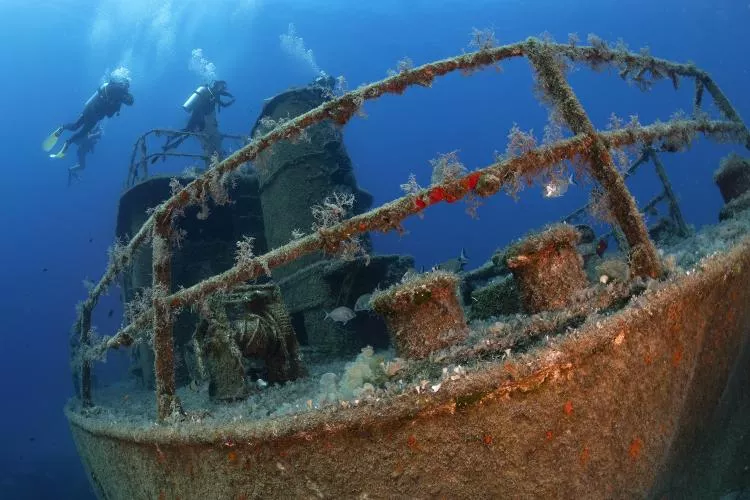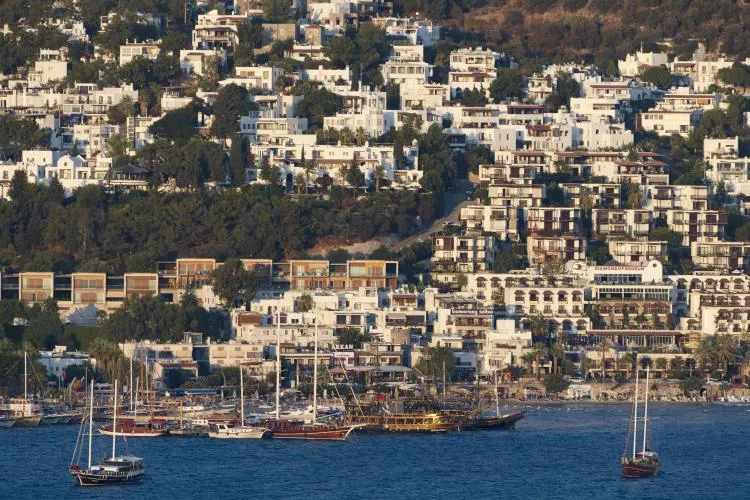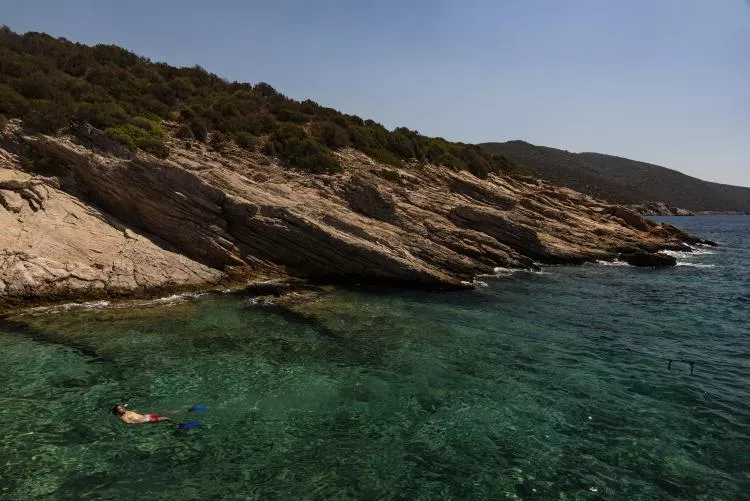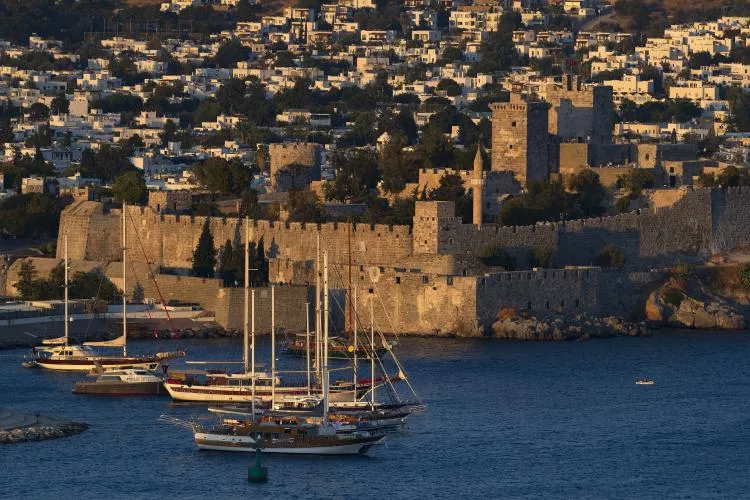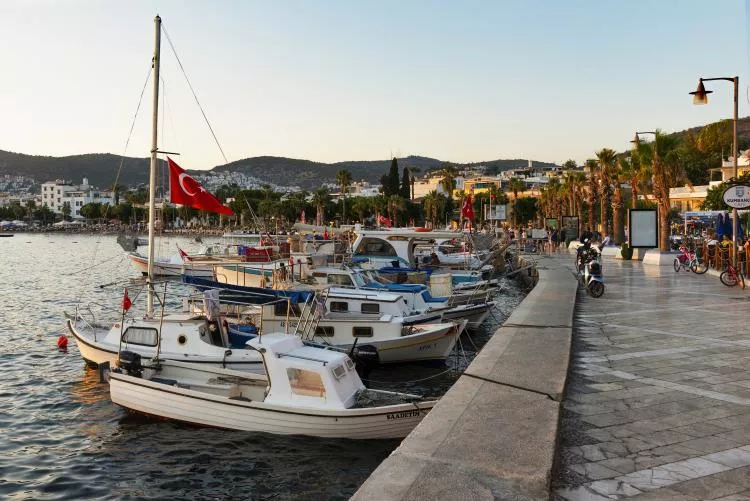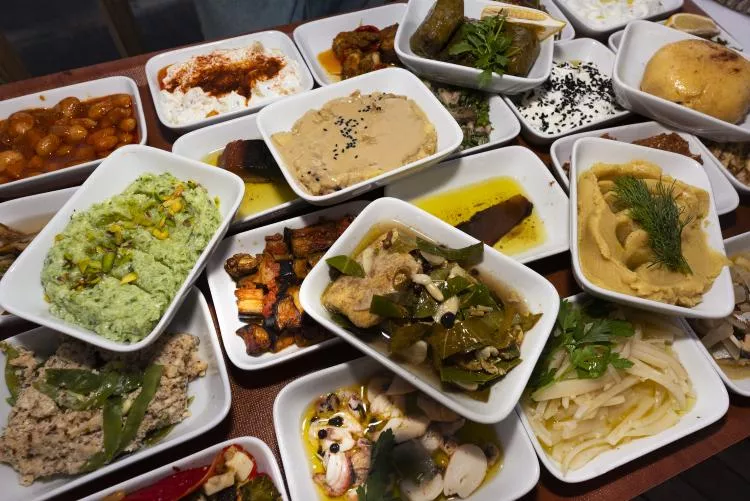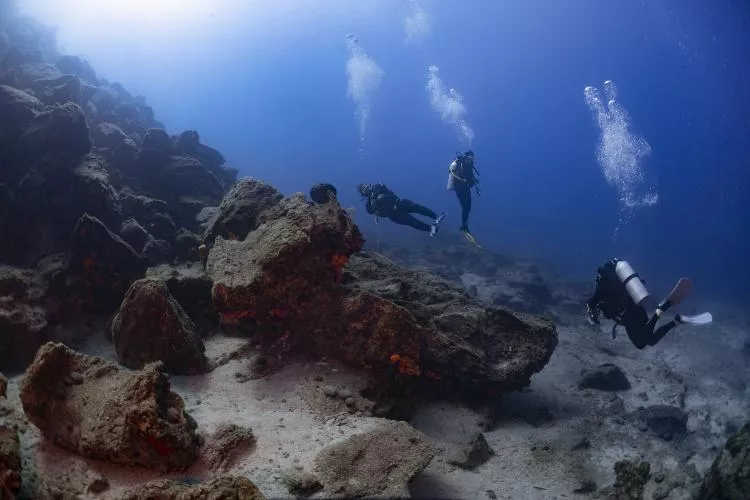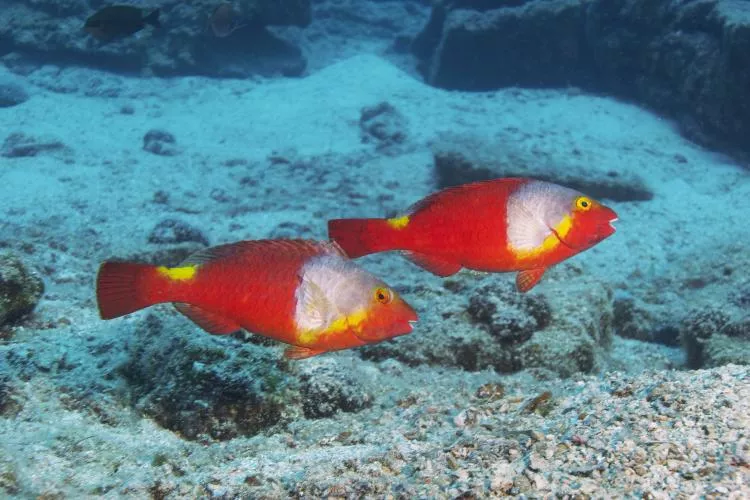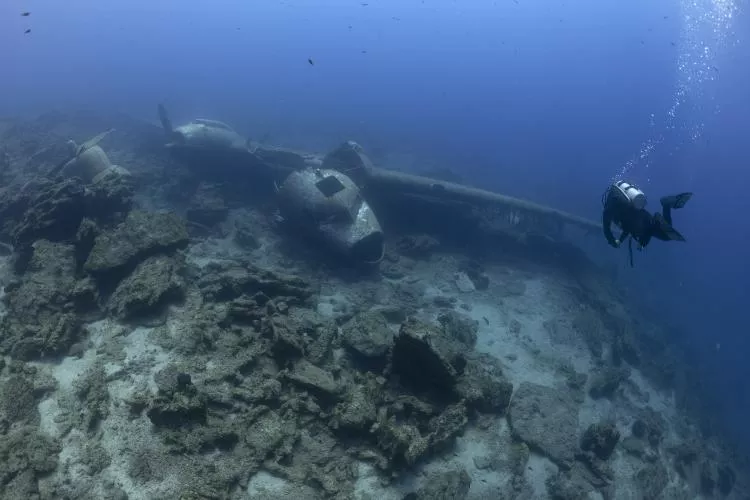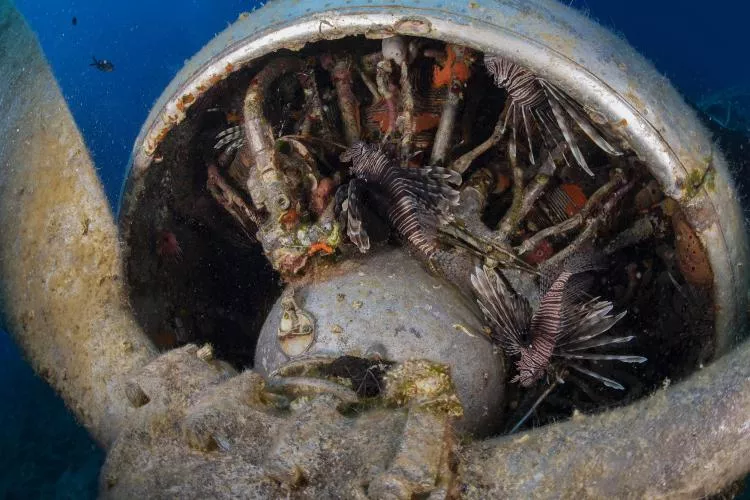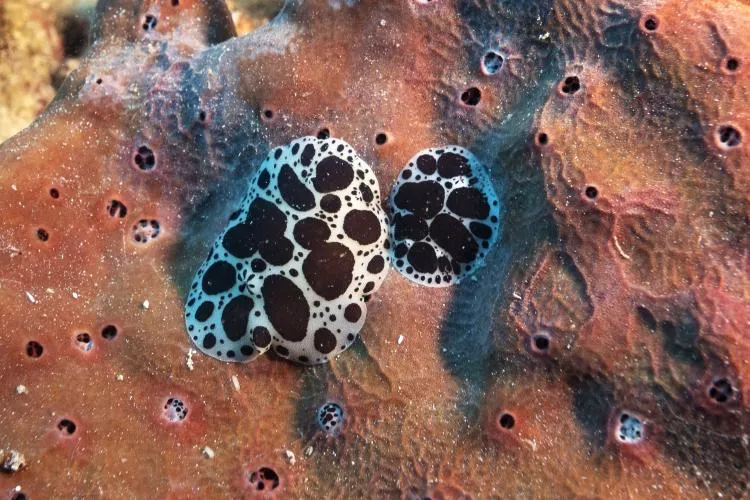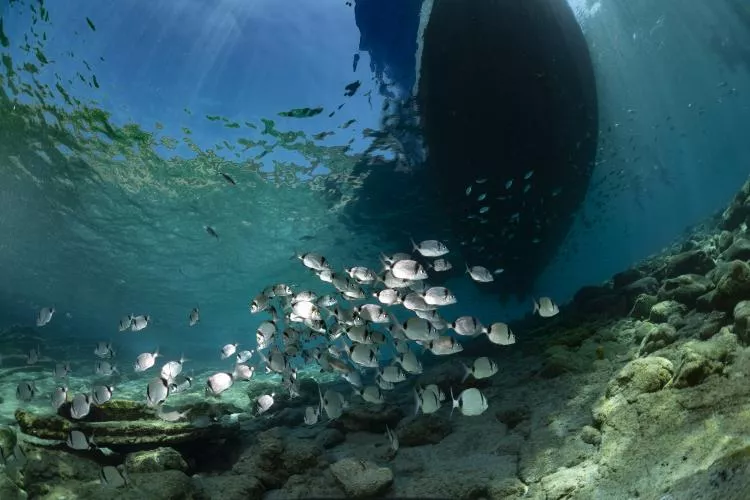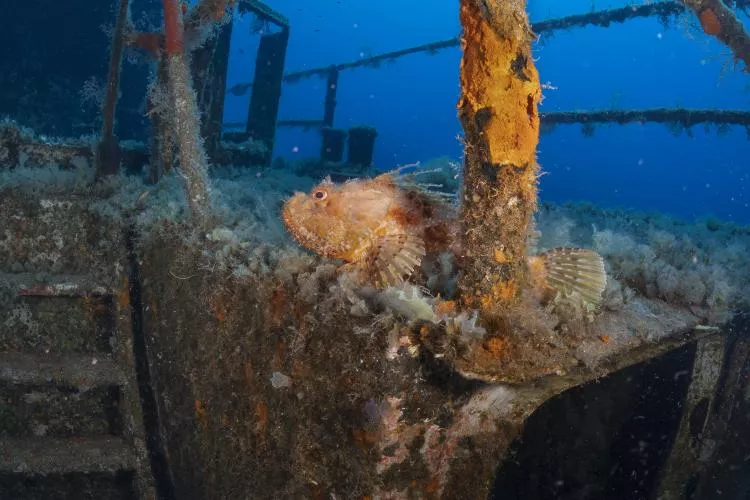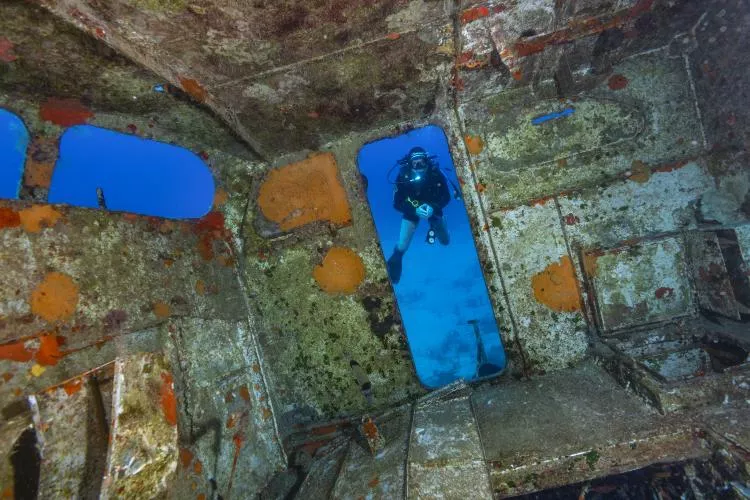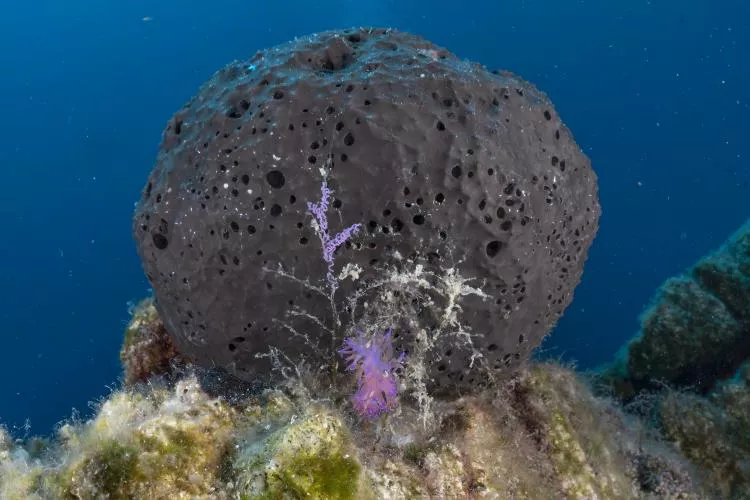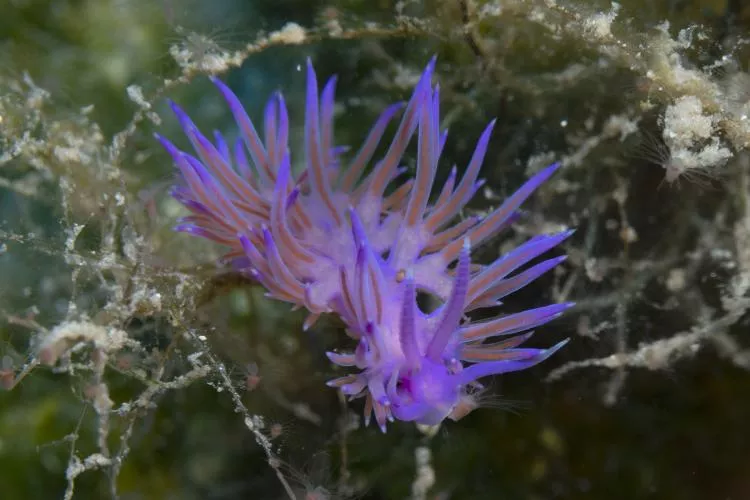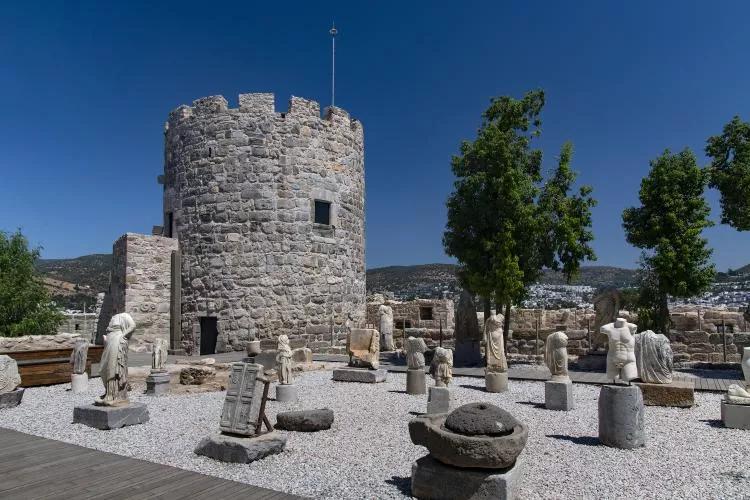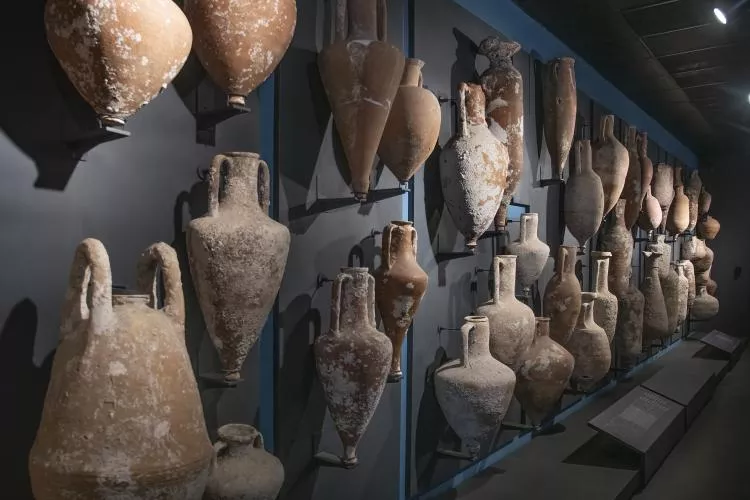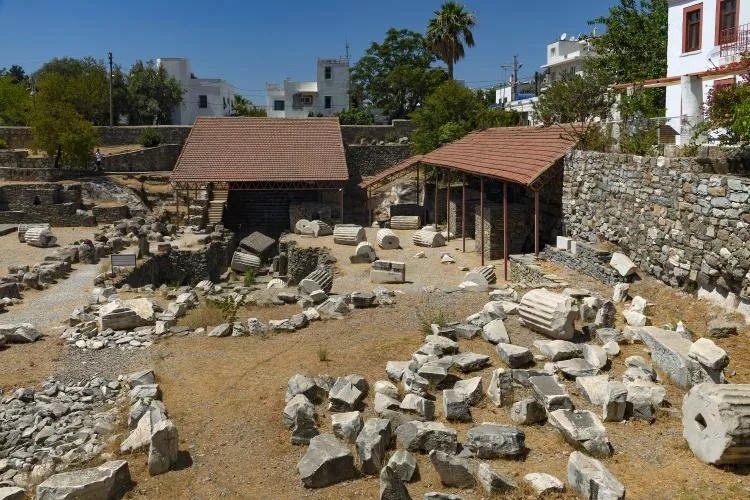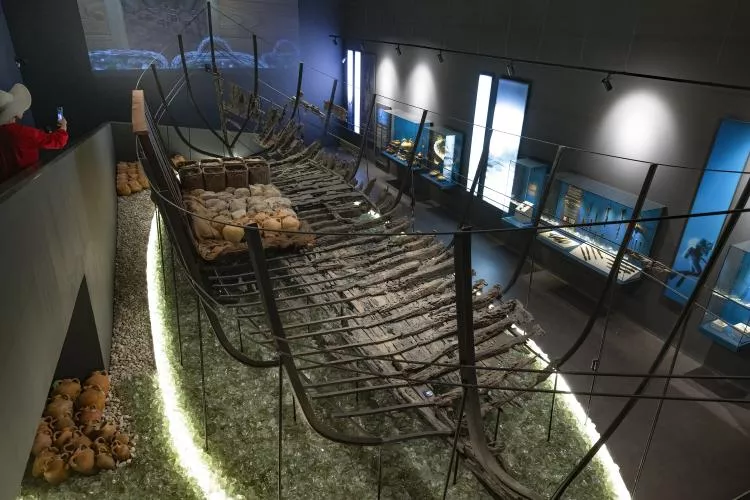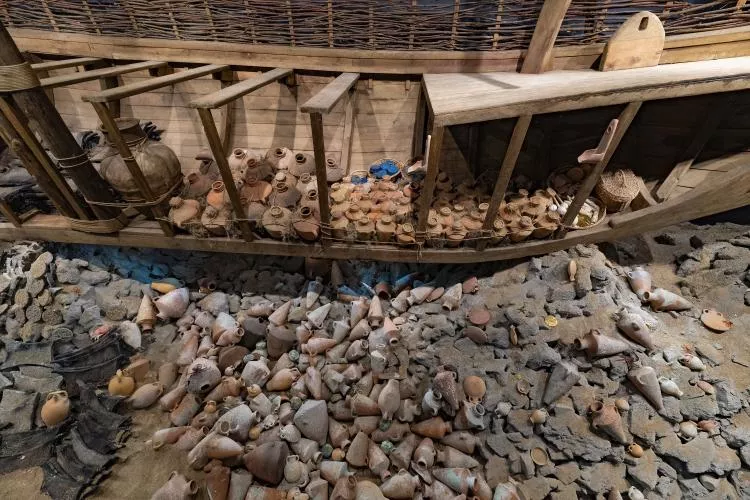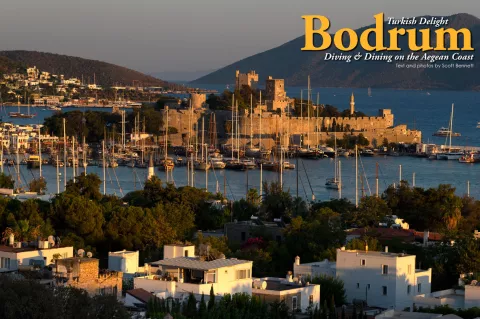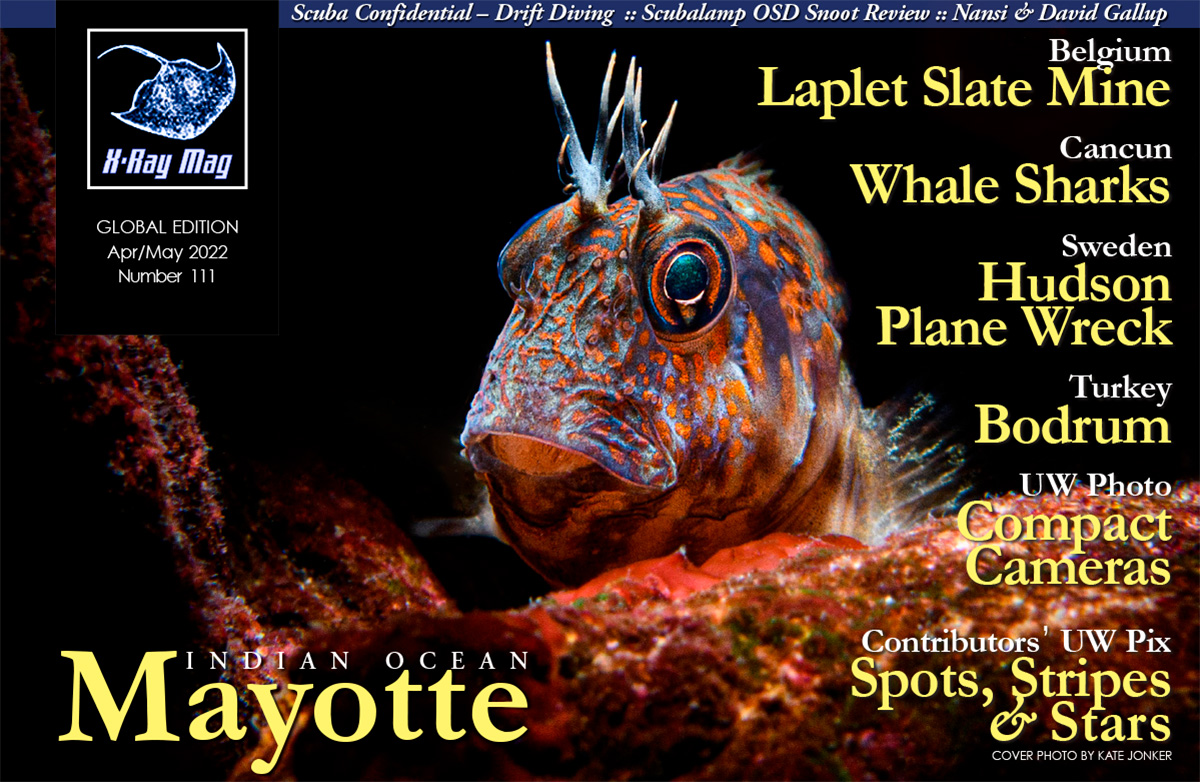One of the premier tourist destinations on Turkey’s Aegean coast, Bodrum is renowned for its beautiful coastal scenery, history and laid-back ambiance. Scott Bennett shares his diving, cultural and culinary adventure to this ancient city.
Contributed by
Although I had been to Turkey several times, I had never dived in the country before. It is always exciting arriving at a new destination, and even more so after 18 months of Covid-enforced lockdowns during the pandemic.
My good friend Raf Jah had long recommended that I visit Turkey, and with a trip to Egypt routing through Istanbul, there was no better opportunity. Spending nearly six days there, including four diving days, would provide ample time to explore. I was stoked!
Occupying a series of peninsulas extending into the Aegean like outstretched fingers, the city features an extensive history dating back more than two millennia. An easy one-hour flight from Istanbul, the airport is located well out of town, necessitating a taxi ride as long as the actual flight. Even more so in my case, as I arrived during rush hour on a Friday afternoon. Arriving just before sunset, I caught a glimpse of the Castle of St Peter, Bodrum’s most iconic sight. Before long, I arrived at my modest guesthouse in Bitez, located a few bays over from the city centre.
With gear unpacked, I was famished after a long day of travel. Luckily, there was a restaurant right across the street with high recommendations from Raf. Situated right on the waterfront, the Bitez Café was open and busy. Always a good sign! I had my heart set on something Turkish and the Çökertme kebab looked intriguing. A local speciality featuring crispy shoestring potatoes, covered by garlic yogurt and julienne-sliced chicken, it was not the kebab I expected, but it proved a tasty surprise indeed.
I awoke to glorious sunshine for my first diving day and was immediately struck by the local architecture. With gleaming, whitewashed structures contrasting sharply against the intense blue sky, the scene resonated “Mediterranean.” I later discovered there was a strict local code, which decreed that everything must be white or feature natural stone or wood, so as to create a uniform look.
Crossing the road, I ventured back to the Bitez Café for breakfast. One of the joys of any visit to Turkey is its cuisine, and I had a hankering for one of my breakfast favourites. Menemen is a traditional egg scramble with peppers, onions, tomatoes and a subtle hint of spice, served with crusty bread. Despite being a coffee guy, I ordered apple tea, served in a round glass cup. Traditional Turkish tea is black and consumed on a massive scale throughout the country, but I am quite partial to the apple variety. If strong is your thing, one tiny cup of Turkish coffee is enough to surpass one’s daily caffeine limit in one fell swoop!
Dive operator
Belly full, I set out for the marina to find the boat. I wondered where the dive shop was, but it turned out the dive shop was the boat. Quite a logical arrangement actually. On hand to greet me were owners Kenan and Joby Dogan. Kenan and Joby have been active PADI Instructors since 1995 and 1997, respectively. An ex-Navy diver, Kenan founded Aquapro Dive Center in 1997. A professional diver since 1985, he is both a recreational and commercial diving instructor as well as a dedicated underwater photographer. Kenan has also been a driving force in the establishment of the area’s artificial reefs.
Joby has been the sole British dive instructor on the Bodrum Peninsula for the past 24 years. A diver since 1995, she is active on the dive boat every day. Earning her PADI Rebreather Instructor licence in 2016, she is the first and only woman in Turkey to have done so. She also boasted an amusing array of T-shirts, with my two favourites being “Wonder Woman” and “Head Witch.”
Diving
Hosting a mixture of divers, snorkellers and day-trippers, the boat was quite full—a refreshing sight in our ongoing Covid-19 world. With everyone aboard and paperwork finished, it was time to head for the day’s first location. Leaving the bay, the Greek island of Kos was plainly visible on the horizon; so close in fact, that one’s smartphone will proclaim “Welcome to Greece!” However, I was on vacation, so mine remained firmly off.
Although Aegean reefs are not exactly brimming with coral, the beautiful underwater environment and clear waters make Bodrum a great dive destination. Around 20 dive spots are present, featuring typical Aegean and Mediterranean flora and fauna. An hour later, we arrived at our anchorage spot in a picturesque bay where rugged formations cascaded into the azure sea.
Karaada
Located only four miles from the coast of Bodrum, Karaada (Black Island) is the most popular dive location for beginners and advanced divers, with depths ranging between 6 to 35m. Back on the dive deck, it was time for our briefing.
Bubble Cave. Our first dive site was Bubble Cave, named from the chimney-shaped cave accessible at 12m. Geared up and ready, I did a giant stride off the rear of the boat. The 25°C water was a jolt in my shortie wetsuit, but the chill quickly subsided. Descending to the sandy bottom at 30m, we followed the wall’s base before gradually levelling to around 20m. Visibility was easily 25m, with the undersea formations mirroring those above the surface. Huge boulders punctuated the slope, interspersed with patches of seagrass alive with tiny fish.
Entering the cave, fish darted along walls dotted with crabs, corals and sponges. The spacious interior narrowed towards the exit point at 5m, necessitating a single-file exit for our entourage. Upon exit, the reason for the cave’s name became immediately apparent, the result of divers’ bubbles escaping through cracks in the cave’s ceiling.
Kaçakçı
A short boat ride delivered us to our second dive at Kaçakçı (Smuggler’s) Bay. Situated at the rear of Karaada, its depths ranged from 5 to 30m and was suitable for both beginners and advanced divers. Although coral was lacking, the undersea scenery was striking. Here, the photography was all about the terrain, a rich tapestry of shapes, textures and form. Football-shaped black sponges clung to jagged outcrops, with one specimen hosting a delicate Flabellina affinis nudibranch with freshly laid eggs. I even spotted a lionfish, a relatively recent arrival from the Red Sea.
Finning back to the boat, I noticed a school of two-banded seabream had congregated beneath it as well as the two additional vessels that had since anchored alongside us. Obviously used to handouts, I was immediately surrounded, offering some fun photo ops of the fish beneath the boats.
Dining
After an exhilarating day, I had a quick shower before venturing out to find some dinner. I could see restaurants farther along the bay, so I headed in that direction. With many eateries to choose from, I opted for the Sultan Restaurant, with outdoor tables right on the beach.
Sadly, I had a propensity for mangling Turkish, but the friendly waiter took it in stride. In fact, he brought me a pair of complimentary appetisers to accompany my Efes lager. Both the creamy yoghurt with dill and the red pepper dip were amazing as was my main course of a mixed grill. And I did not dine alone.
An affable pair of beach dogs patiently sought a handout, and their ambitions were not remotely subtle. The small one sat at my feet with eyes locked on mine, while the larger one rested his head on the table edge, a puddle of drool expanding outward.
Diving on Day Two
After an enjoyable first day, I could not wait to see what Kenan had in store. With the Aegean lacking coral reefs, the Turks create their own attractions by sinking things. BIG things!
Dakota C47. Resting between 17 and 32m, the Dakota C47 is a former Turkish Air Force plane sunk as an artificial reef in 2008. From the boat, it was an easy 10-minute swim to the wreck, past rocky outcrops interspersed with seagrass meadows. Before long, the aircraft soon loomed into view, materialising from the blue like a winged ghost.
Although intact when sunk, storms and currents had since broken the plane apart. The fuselage and tail now remained ensconced in the sand, with one wing at 17m and the other at 25m. The cockpit had also broken away from the fuselage. Aside from the rear cabin door at 29m, the wreck was not penetrable.
I was taken aback at just how large this aircraft was; I was expecting something a LOT smaller! I had previously dived a few Japanese Zero wrecks in Papua New Guinea, but nothing that matched this craft’s titanic dimensions.
Pointing skyward, a detached propeller perched atop a rocky outcrop, comically reminding me of an old-time beanie. In a recess at the base, numerous lionfish hid in a large clump. Recent arrivals in the area via the Suez Canal, I encountered more lionfish here than on my Red Sea liveaboard two weeks earlier.
There was just so much to photograph, it was hard to know where to start. Fortunately, my dive buddy Timucin proved to be an excellent model. Having a diver in the image really demonstrated the wreck’s scale. I was utterly blown away and would easily rate the Dakota as one of my all-time favourite wreck dives. I was so enthralled by all the photo ops on hand, I later realised I totally missed photographing the cockpit. Grrrrr! Despite this omission, I would say it was a pretty good dive!
Paçoz Bay Wall. Our second dive at Paçoz Bay Wall contrasted sharply with the Dakota. Orange sponges capped rocky outcrops, adding splashes of colour. Overhangs provided refuge for Mediterranean soldierfish, painted comber and starfish, while closer scrutiny revealed delicate violet flabellina nudibranchs. Far below, beyond recreational limits, some enormous groupers were visible just off the wall. Farther along, a few were in shallower water, but they beat a hasty retreat at our approach.
Once again, the scenery was dramatic, with sheer walls interspersed with rocky outcrops and sandy patches. Mediterranean fish were positively electric, bright red with white patches fringed with a yellow stripe. If camouflage was their intent, they failed miserably, standing out like beacons against the rock and sand. The guide gestured towards a sponge, and I was baffled as to what I was seeing. I took a photo regardless and was later ecstatic that I did. The subject was a pair of doris nudibranchs, a species I had never seen before.
Heading back to Bitez revealed an Aquapro daily ritual. Nearing the entrance to Bitez Bay, I noticed we were being followed by a posse of gulls. They knew something was up, and I soon discovered what it was. Every day at this time, any remaining sandwiches were thrown overboard and were speedily gobbled up.
Mezze & raki
For the evening, Raf had arranged dinner with his friend, local guide Deniz Kilic. When he picked me up at the guesthouse, I had no clue where we were headed. “Do you like Turkish food?” he asked. “We’re going to a place that serves only mezze dishes. No tourists come here, only Turkish people. Is that OK?” Frankly, he had me at Turkish food.
After finding a parking spot, a short walk along the promenade brought us to Iki Sandal. We were led upstairs to the terrace, our table offering stunning views of the waterfront, with the castle dramatically silhouetted by the setting sun. Looking down at the lively promenade, Deniz commented it was quieter than usual. If this was quiet, a normal evening must be mayhem!
Before long, the manager arrived with a tray laden with tantalising dishes. Deniz explained that a number of the dishes had recipes that were hundreds of years old. The manager patiently described each item, and I was given the task of choosing. Offerings included yogurt with dill, swordfish, a fava bean puree, eggplant with tahini and red pepper with cheese, nuts and basil, to name a few.
Utterly overwhelmed, I finally settled on seven dishes, only a small selection of what was on offer. Each one was outstanding, and we ordered seconds accompanied with a bottle of raki, Turkey’s beloved aniseed liqueur. This was not just one of the best meals of my entire trip; it was one of the best meals I have ever had, period! I know where I am going the next time I am in town. With my belt in need of an additional notch (or two), a post-dinner stroll was in order.
With twilight deepening, we set out on the waterfront promenade. Shops bustled while music resounded from bars and restaurants. After 18 months of lockdowns, everything seemed normal again! Streetlights twinkled overhead as vendors tempted passers-by with fresh seafood from wheeled carts. The stacks of mussels with lemon looked tempting, but for me seafood from a vendor was not exactly the safest culinary option. Then again, I probably did not need to eat again for at least two days.
More diving
The ensuing three days followed a similar schedule, with a 10:00 a.m. departure, two dives and lunch on the boat. Each morning at the café, I ran into Kenan and joined him for breakfast. After all, the day could not begin properly without some menemen and Turkish tea.
Pinar I. We were originally set to dive a reef in Bodrum Bay, but exceptionally strong currents thwarted our plans. No matter, as Kenan’s backup site was hardly a disappointment. Another big wreck, the Pinar I was recommended for advanced divers only. Located southeast of Karaada, the ex-Turkish Navy water tanker was sunk in 2007 as an artificial reef. Measuring 39m long and 17m high, the stern sits at a depth of 20m, with the bow descending to 33m.
Upon arrival, I immediately descended to the bow, where the vessel’s scale became immediately apparent. It was a good thing I had the fisheye lens on my camera to capture its immense scale but limited my depth to around 30m. Qualified wreck enthusiasts will enjoy the numerous doorways allowing penetration to the interior, but I was more than content to explore the exterior.
Two-banded sea bream congregated around a mast on the main deck, while a large scorpionfish posed obligingly by a nearby railing. The wheelhouse was especially photogenic and home to nudibranchs, tubeworms and sheltering fish, while moray eels hid in the vents. The wreck’s depth and size created the classic diver’s dilemma: too much to see and not enough time!
Dakota C47 revisited. Our second dive was a return visit to the Dakota C47, and I was thrilled! This time, I headed straight for the cockpit to get the shots I missed the first time around. Peering through an opening at the top revealed the corroded interior, with controls relatively intact and a sea urchin being the sole occupant. With so many photo prospects, I could have easily done another dive there.
From seafood to mixed grills
Back in Bitez, I started a nightly routine. After a shower and backing up the day’s images, I walked back to the area of restaurants for dinner. Each night I tried a different one, sampling a variety of Turkish dishes ranging from seafood to mixed grills while enjoying the sunset from my beachside table (with a dog or two for company).
Last day of diving
Sadly, my final diving day had arrived, but Bodrum’s hat trick of wrecks was completed with a visit to the SG115 shipwreck.
SG115. The retired coast guard patrol ship was 29m long and 15m high. The stern rested at 18m and the bow at 26m.
Smaller and shallower than the Pinar 1, the SG115 was suitable for both entry-level and advanced divers. Another marvellous wreck dive, penetration into the wheelhouse was also possible, allowing for some interesting wide-angle photography opportunities. Hydroids and encrusting sponges shrouded the railings, while two-banded sea bream congregated around the mast and flagpole, where squid eggs could sometimes be found. Due to its smaller size, we were able to navigate a majority of the wreck in one dive.
Paçoz Bay. After three full days of wide-angle photography, I hauled out the macro gear for my final dive at Paçoz Bay. Blennies perched atop black sponges, while I managed to catch a glimpse of an octopus before it vanished into a crevice. I found some more specimens of Flabellina affinis nudibranchs to photograph along with some tiny tubeworms.
Topside excursions
For my last day in Bodrum, I met up with Deniz for a full-day tour. Unfortunately, recent fires made an excursion to the surrounding countryside off-limits, but there was no shortage of things to see. Bodrum is one seriously historic place, dating back to the 4th century BC. Back then, it was called Halicarnassus, capital of Caria and home to a certain seventh wonder of the world.
American Hospital. Our first stop was at the American Hospital for a PCR test, as I was leaving the country two days later. Only a short walk from where we parked, I decided to leave my camera. I soon learnt that in Turkey, one should ALWAYS bring a camera. During hospital construction a few years earlier, digging revealed intricate mosaics, the floor of a long-vanished home from the Halicarnassus period. As a result, the hospital was built around them, with glass panels at the ground level allowing visitors to view them. Despite just walking in, the test was finished within 20 minutes, and we were on our way.
Bodrum Mariners Association Café. The shops and bars, buzzing with activity only two nights before, now lay empty and silent. Deniz remarked that he had never seen Bodrum so quiet. However, coffee shops were always open, and he suggested the Bodrum Mariners Association Café for a cuppa. Established as a café for local fishers, it was a relaxing spot to enjoy tea and a Turkish-style bagel called simit.
Castle of St Peter. We then headed towards the Castle of St Peter, home to a superb archaeology museum with an emphasis on undersea wrecks. Constructed by the Knights of St John starting in 1404, the castle was seized by the Ottoman Empire in 1523 and remained under their control for another 400 years. After lying empty for 40 years, the castle was converted into a museum.
Along with exhibitions featuring amphora, glass, coins, jewellery and the history of Halicarnassus, the museum’s claim to fame was its shipwrecks. Dating from 1025, the Serçe Limani was a two-masted vessel with lateen sails some 16m in length. Laden with a glass cargo in excess of three tons, it was thought the vessel was en route to a glass factory somewhere within the Byzantine Empire when it sank off the southern Turkish coast.
Even older is the Uluburun, a Late Bronze Age wreck of the late 14th century BC discovered in the Mediterranean near Kas, Turkey. Found by a local sponge diver in the summer of 1982, the wreck had been spared plunder due to its depth between 44 to 61m. Boasting a cargo of copper, tin and glass ingots, jewellery, Cypriot pithoi (large storage jars) and perishable goods, the vessel provides a unique window into Bronze Age maritime trade. Fascinating stuff indeed!
The Mausoleum of Halicarnassus. Bodrum is also home to the remains of one of the world’s original Seven Wonders: The Mausoleum of Halicarnassus. In fact, the word “mausoleum” is derived from ancient King Mausolus, who built the structure as his intended tomb. Completed in the 4th century BC, the original structure stood 45m in height, its sides adorned with columns of sculptural reliefs atop a massive stone platform.
Ultimately abandoned, it was eventually toppled by a series of earthquakes. When the Knights of St John arrived in the 15th century, they plundered the giant stone blocks to construct the Castle of St Peter. Today, all that remains are a scattering of blocks and broken columns, a faint echo of the massive structure that once stood here. In a small museum on site, a model hints at the structure’s original grandeur.
Craft beer & Turkish ice cream
After a stop at the old city gate of Myndos, Deniz had a special place in mind for lunch. Not far from Bitez sun, the beachside Pab Gastro Pub was an inspired choice. A cold craft beer was just the ticket after a full day of touring, along with some tasty kofte (Turkish meatballs). Seriously, I could spend all my time in Turkey just eating.
But the food was not quite over. I had earlier mentioned that I liked the Turkish ice cream called dondurma, so we finished up at, where else, a place called Turkish Dondurma in Bitez. Dondurma is unique, boasting a chewy texture due to the inclusion of mastic. It is a bit unusual to the uninitiated but no less delicious. After a three-scoop bowl of blackberry, sour cherry and pistachio, it was time for a break.
Deniz dropped me off at the guesthouse to recharge for a few hours. As other commitments beckoned, he left me in the capable hands of his associate İlknur Demir, who picked me up around 4:00 p.m.
Incredible views
The final stop of the day was a hilltop viewpoint with Bodrum Bay on one side and Gumbet Bay on the other. At the highest points, stone windmills faced northwest to ensnare coastal winds. Now derelict, they were used from the 18th century until the 1970s to grind flour for the local people.
The views were astonishing, encompassing Bodrum and the surrounding bays and peninsulas. As the sun set and the city lights flickered to life, the colour intensified, with land and water a radiant mélange of red and gold. And if that was not enough, a Turkish mixed grill at a Bitez beachside restaurant sealed the deal.
Afterthoughts
After six days, Bodrum’s charms, both under and above water, had me mesmerised. Couple the great diving with beautiful scenery, history, local cuisine and the wonderful Turkish people and you have got a destination that appeals to both divers and non-divers alike. A return visit is definitely in the cards. Besides, there are still some mezze dishes to sample…

